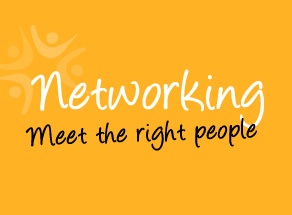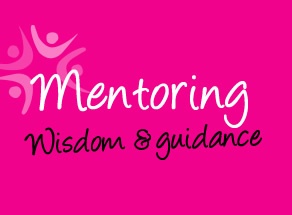
Is There a Black, Latino Doctor in the House?
09/23/2013 01:35PM | 8853 viewsIn the fall of 2005, Alister Martin seemed the most unlikely candidate for Harvard Medical School. Laid up in the hospital with “my face so swollen my mother didn’t recognize me,” he says, the high-school senior was recovering from a brutal gang attack. The situation had escalated to a point that law enforcement advised Martin’s mother, a Haitian immigrant, to pull her son from Neptune (N.J.) High School to avoid further trouble.
So Martin’s mom secured a $15,000 loan and sent her son to the private Bollettieri Tennis Academy in Florida, where he completed his GED online while practicing 16 hours a day. Martin’s drive and unwavering desire to become a physician pointed him to Rutgers University’s Office for Diversity and Academic Success in the Sciences (ODASIS), whose Access-Med program prepares promising Black, Latino and other undergrads from underrepresented and economically disadvantaged groups for careers in medicine.
Four years later, Martin graduated from Rutgers with a 3.85 GPA and will begin Harvard Medical School this fall. “A miracle happened,” says Martin.
Each year, ODASIS serves roughly 500 at-risk undergrads, and nearly 800 of them have graduated since the program’s founding in 1985. Among the ODASIS class of 2009, 86 percent were accepted to medical school, up from 70 percent in 2007.
Still, Black, Latino and American Indian med students are rare. Three years ago, more than 40,000 people applied to medical school in the United States, with Blacks, Latinos and American Indians making up only about 15 percent of the applicant pool, reports the Association of American Medical Colleges (AAMC), while comprising about one-third of the population. That same year, only 8.7 percent of doctors were from these underrepresented groups, according to a study published in the Journal of Academic Medicine.
The latest AAMC data shows only slight improvement: Among the 42,269 med-school applicants in 2009, only 16 percent were Black, Latino or American Indian. And this disparity extends beyond the potential physician pool—a mere 6.9 percent of people from underrepresented groups ended up as dentists in 2007, only 9.9 percent were pharmacists and just 6.2 percent were registered nurses.
But it’s critical that people from underrepresented groups be recruited into healthcare and other science, technology, engineering and math (STEM) fields because it will increase the quality of care for those groups and spur innovation. Black, Latino and American Indian/Pacific Islander physicians are nearly three to four times more likely than whites to practice in underserved communities, reports the AAMC.
The dearth of diversity in all STEM professions is what inspired the launch of ODASIS. In 1986, when the initiative first began, only one Black student from Rutgers was accepted to medical school, and he eventually became a radiologist.
STEM-Enrichment Success
ODASIS is a rigorous program that offers four years of step-by-step supplemental instruction, academic enrichment and career advice designed to increase the pipeline of underrepresented talent in all STEM fields. The program is managed by Trinidad native Dr. Kamal Khan, a tireless instructor and caring mentor. He ensures that a four-year academic plan is developed for each incoming freshman so he/she stays on track and pursues the appropriate opportunities.
As a result, these students, often the first in their families to attend college, gain self-confidence. Before ODASIS, says Martin, “I never really believed in myself.”
Academic customization and an integrated-learning approach have helped make ODASIS a success. As part of the Access-Med program, for example, Khan formed collaborative relationships with local healthcare institutions to provide students with research training, professional learning and hands-on experience. Most unique to this pipeline program is the seven-month MCAT (Medical College Admission Test)/DAT (Dental Admission Test) prep course.
Khan often starts working with students who have been identified as having an interest in the sciences the summer prior to their first semester at Rutgers. To facilitate the transition for these incoming freshmen, Khan developed a five-week summer prep program to expose students to basic math and chemistry that allows them to earn college credits toward their degree. This summer, with financial support from Merck & Co., Khan and his team are working with 25 students to help hone their basic math skills “so they can hit the ground running” when they enter college.
“Students were coming in not prepared to take science courses,” he says. “They didn’t have the basic college math to take a college science course. So [we'd have] to support them in the basics. And then by the time they finished the basics, they were in their second year and would say, ‘I don’t want to take the sciences. I’m going to be here forever.’”
But thanks to the support of local organizations, the Educational Opportunity Fund Central Office and Johnson & Johnson, Khan is creating a feeder pool of potential ODASIS students by working with local students as early as ninth grade. The goal: to provide laboratory exposure, SAT-prep instruction, college-admissions counseling and career advice. This year, more than 300 12th-grade students attended the ODASIS Saturday Scholars Academy, one of four separate college-prep programs Khan oversees.
“We also do workshops with parents,” he says. “We get parents very involved.”
What motivates ODASIS students to succeed? Setting high standards and being held accountable for their actions, says Khan. “If you walk into class late or you miss a session and get three red flags, you’re out of the program,” he says. “Why so strict? If you want to be a doctor and you miss the operation, someone dies. So we try to teach them to become mature at a young age.”
In addition to their regular coursework, ODASIS students are required to attend roundtable-style academic support sessions, study halls (up to 9 hours a week for freshmen), testing, motivational workshops and more. They also meet one-on-one with advisers twice a month to review their progress.
“If you’re not doing well, they will call your family,” warns Mekeme Utuk, an ODASIS graduate who just completed her first semester at Harvard Medical School.
In exchange, the students, who often come from economically disadvantaged backgrounds, appreciate the support and opportunity. “All that I could take tutoring for, I took. I thought, ‘Why not? It can’t hurt; it’s just extra practice,’” recalls Utuk, whose parents are Nigerian immigrants.
The program also teaches undergrads how to study, critical for challenging courses such as organic chemistry. “I really didn’t know how to study. In high school, I would just cram for exams. But I didn’t know how to break down a chapter and take good notes … and learn through repetition,” says Utuk. “ODASIS made me a better thinker.”





Post your Comment
Please login or sign up to comment
Comments